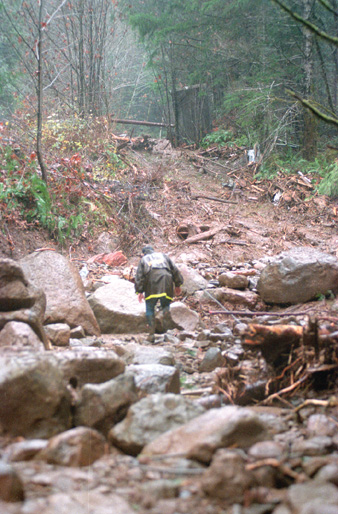December Floods
Most of the December flooding occurred early in the month in response to a series of storms. Precipitation for December 8 at Roseburg, Riddle, and King Mountain was 3.53, 2.75, and 4.2 inches, respectively (table 1). Unlike the November 16-19 storm, the December storms resulted in some snow accumulation at higher elevations. Precipitation for the period of December 3-9 contributed to both snowpack and runoff. The December flooding was more severe in the South Umpqua River Basin than the November flooding, which was more severe in the North Umpqua River Basin. The recurrence interval for the December peak discharges within the entire basin ranged from more than 2 to less than 25 years (table 2). Most of the peak discharges occurred on December 8.
|
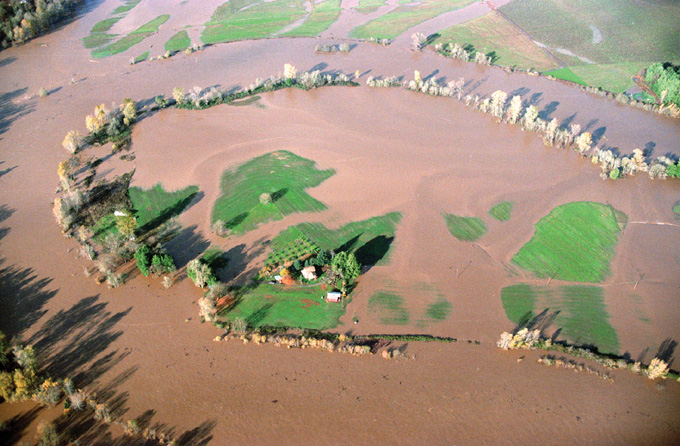
|
Aerial view of flooding on the lower Umpqua River in December 1996. (Photograph by Jerry Redfern, Roseburg, Oregon, News Review; used by permission.
|
|
January Floods
Another moist subtropical weather system brought steady rain starting around December 28 and continuing until January 2. Snowpack and air temperature data collected during this period at the King Mountain and Diamond Lake SNOTEL stations showed a net depletion of the preexisting snowpack. Most of the January peak discharges occurred on January 1 within the Umpqua River Basin. However, a separate storm later in the month caused January peak discharges to occur on January 31 in some tributary creeks in the lower section of the Umpqua River. The recurrence interval for the January peak discharges ranged from less than 2 to more than 100 years (table 2).
The most severe flooding occurred in the upland reaches of the South Umpqua River Basin. Although the magnitudes of the November floods at some sites were greater than those of the January floods, the January floods caused more damage. After 3 months of above average precipitation throughout the Umpqua River Basin, soils had become saturated by January, and conditions were more conducive to landslides and road failures than they were earlier in the season. Damage to roads and bridges within the Umpqua National Forest caused by the January floods were roughly equivalent to damage caused by the November and December floods combined (Mikeal Jones, USDA Forest Service, written commun., 2004).
|
References Cited
U.S. Interagency Advisory Committee on Water Data, 1982, Guidelines for determining flood flow frequency, Bulletin 17B of the Hydrology Subcommittee: Reston, Virginia, U.S. Geological Survey, Office of Water Data Coordination, 183 p.
Acknowledgements
This publication was produced in cooperation with the USDA Forest Service, Umpqua National Forest; Bureau of Land Management, Roseburg District; and the Oregon Water Resources Department, Douglas County Watermaster. Special thanks for assistance from Mikeal Jones, Umpqua National Forest, and Elaine Youngquist, Public Works Department, Douglas County, Oregon.
For More Information:
The U.S. Geological Survey has served the public and Federal, State, Tribal, and local governments since 1879 by collecting, analyzing, and publishing detailed information about the Nation's mineral, land, and water resources. For more information on water resources in Oregon:
Public Information Specialist
U.S. Geological Survey
10615 SE Cherry Blossom Dr.
Portland, Oregon, 97216
tel: (503) 251-3200
fax: (503) 251-3470
e-mail: info-or@usgs.gov
Selected data and interpretive reports are available from the USGS Oregon District Web site: http://or.water.usgs.gov/.
|
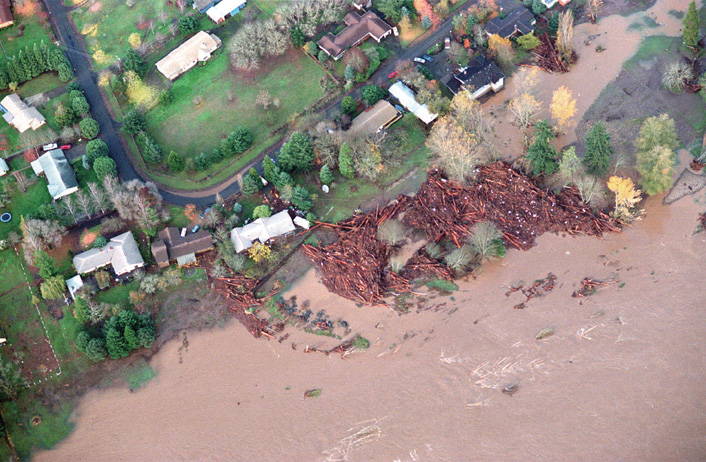
|
Floodwaters carried logs and other debris into backyards along the North Umpqua River near Winchester during the November 1996 floods. (Photograph by Jerry Redfern, Roseburg, Oregon, News Review; used by permission.)
|
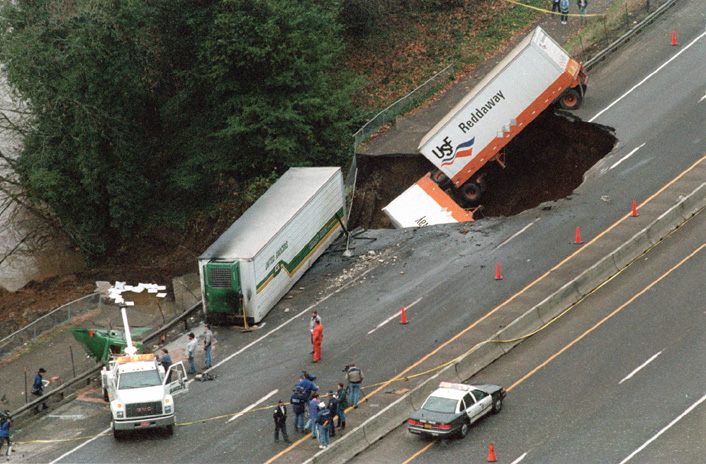
|
A mudslide on November 21, 1996, resulted in the collapse of a section of Interstate 5 along the South Umpqua River near Roseburg, Oregon. Damage to roads and bridges was widespread during the storms of November- January 1996-97. (Photograph by Christian Murdock, Roseburg, Oregon, News Review; used by permission.)
|
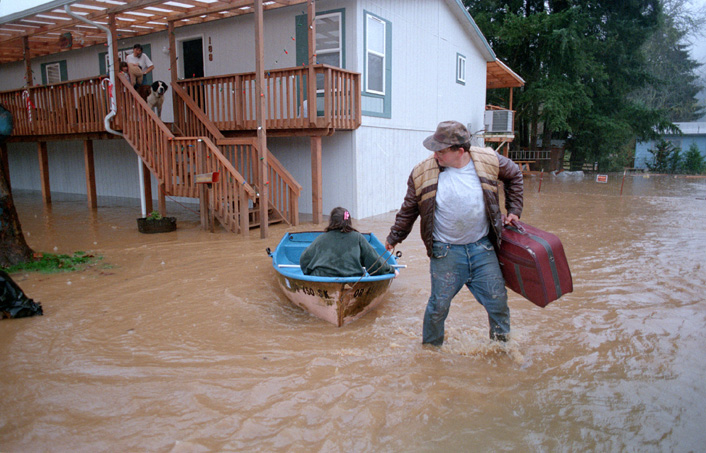
|
Flooding forced many residents to evacuate their homes. (Photograph by Christian Murdock, Roseburg, Oregon, News Review; used by permission.)
|
|




